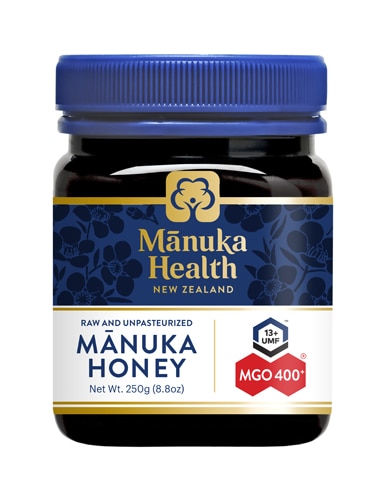When a sore throat strikes, there’s nothing more soothing than sipping a mug of hot tea with a spoonful of raw honey stirred in. But does that mean this natural substance – technically, the sweet fluid created by honeybees from flower nectar – has healing powers? Not so fast! While it’s been used for centuries for a wide range of health-supporting properties, from battling bacteria to combatting coughs, more high-quality studies are needed to determine raw honey’s real benefits. Here’s what we know now about the nutrition of honey and how it can help you.
Sweet addition to your diet
Like most nutritive sweeteners, raw honey is easily absorbed and used by the body. It contains carbohydrates (fructose and glucose), providing 60 calories per tablespoon. Honey also contains trace enzymes, amino acids, antioxidants, B vitamins (riboflavin, pantothenic acid, niacin, thiamin and pyridoxine, and minerals (calcium, magnesium and potassium).
The amount and type of micronutrients, color and flavor of honey can vary depending on which flowers are providing nectar for the bees. When adding honey to foods like plain yogurt or tea, remember that a little goes a long way as honey is actually sweeter than refined sugar.
A topical treasure?
Several studies have looked at how honey may contribute to healthy skin and tissues. What’s interesting about how honey interacts with skin actually centers on the bees themselves. When making honey, bees add an enzyme to the honey that creates a small amount of hydrogen peroxide, which can contribute to skin’s function as a natural barrier against bacterial infection.*
Some types of honey, such as New Zealand Manuka honey, contain higher concentrations of additional components that have been studied in relation to wound healing. Specifically, Manuka honey has higher concentration of methylglyoxal (MG) due to a high concentration of dihydroxyacetone, a MG derivative, in the nectar of Manuka shrub flowers.
The Unique Manuka Factor (UMF) ranking on products is a tool to gauge the concentration of MG in Manuka honey. A rating of 10 UMF or higher is considered therapeutic and may be labeled "UMF Manuka Honey" or "Active Manuka Honey." Remember, it’s always important to visit your doctor for skin conditions or injuries.
Choosing the best honey
Honey consumption may not be for everyone. Possible side effects include allergic reactions, especially in people who are allergic to bees, or a dramatic rise in blood sugar if eaten in large quantities. Children under the age of 12 months should not consume honey due to the risk of infant botulism, a rare but serious form of food poisoning.
Also, not all honey products are created equal. When shopping for honey, read the label. Pure honey only contains one ingredient: honey! Pure honey is sold in several forms without added ingredients or preservatives: from bee to hive to bottle. Pure honey forms include: comb, liquid, creamed/whipped or organic. A honey blend or honey syrup must always list the other ingredients or sweeteners.
Raw vs. the rest
Some people prefer the flavor and texture of raw honey when compared to “heat-treated” honey. Raw honey is defined by the National Honey Board as “honey as it exists in the beehive or as obtained by extraction, settling or straining without adding heat.” Heat may impact honey’s enzymatic activity, antimicrobial properties, microbial quality, color and chemical composition.
Many honey packers use a filtration method to remove extraneous solids and pollen grains in order to improve clarity, delay crystallization and create a consistent texture. Depending on the packer, some honey is warmed to help it flow through the filters to remove beehive residue. After filtration the honey is then bottled. Keep in mind, filtering alone does not impact the honey’s nutrient content.
Honey Hack: Honey in a crystallized form is safe to eat and is a natural process. If your honey crystallizes and you want a constant liquid texture again, simply place the honey jar in warm water and stir until the crystals dissolve.
*These statements have not been evaluated by the Food and Drug Administration. This product is not intended to diagnose, treat, cure or prevent any disease.
This article was contributed by Danelle Vallejos, RD, registered dietitian nutritionist with The Little Clinic (inside select Kroger locations). For more information about dietitian services, visit www.thelittleclinic.com/dietitians.




